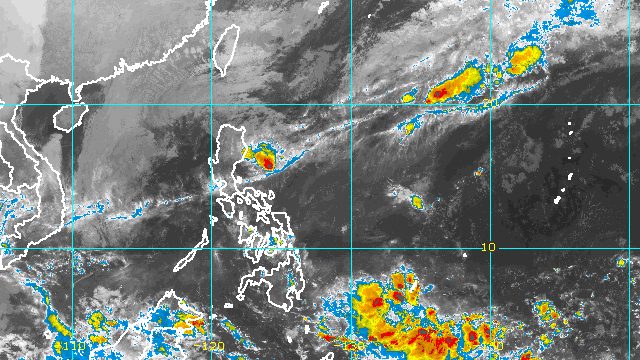SUMMARY
This is AI generated summarization, which may have errors. For context, always refer to the full article.

MANILA, Philippines – Rosal (Pakhar), a tropical storm at its peak, quickly transitioned into a post-tropical low early Tuesday, December 13, due to its interaction with the surge of the northeast monsoon or hanging amihan.
As expected, the cold, dry air caused Rosal to rapidly weaken.
The low pressure area (LPA) that used to be Rosal was located 1,020 kilometers east of extreme Northern Luzon before dawn on Tuesday – too far to affect the Philippines.
It is moving southeast at only 10 kilometers per hour.
“This post-tropical low is forecast to dissipate within 24 hours due to the unfavorable conditions brought about by the surge of the northeast monsoon,” said the Philippine Atmospheric, Geophysical, and Astronomical Services Administration (PAGASA) in its 5 am bulletin on Tuesday.
Rosal did not make landfall in the country, though it did bring heavy rain and strong winds to parts of the country over the weekend. Signal No. 1 had been raised.
Rosal was the Philippines’ 18th tropical cyclone for 2022 and the first for December. PAGASA earlier said there may be one or two tropical cyclones during the month.

Much of the country will have generally fair weather on Tuesday, but the northeast monsoon is affecting extreme Northern Luzon. Rain may hit these areas:
- Batanes
- Cagayan including Babuyan Islands
- Apayao
A new gale warning was also issued at 5 am on Tuesday due to the surge of the northeast monsoon. Rough to very rough seas persist in the following seaboards:
- seaboards of Northern Luzon (Batanes, Ilocos Norte, Ilocos Sur, La Union, Pangasinan, Cagayan including Babuyan Islands, Isabela) – waves 2.8 to 5 meters high
- eastern seaboard of Central Luzon (Aurora) – waves 2.8 to 4.5 meters high
PAGASA advised fishing boats and other small vessels not to sail, and larger vessels to watch out for big waves.
Moderate to rough seas are also expected in these seaboards:
- eastern seaboard of Southern Luzon – waves 1.2 to 4 meters high
- eastern seaboard of Visayas – waves 1.2 to 3 meters high
Travel may be risky for small vessels. – Rappler.com
Add a comment
How does this make you feel?





There are no comments yet. Add your comment to start the conversation.